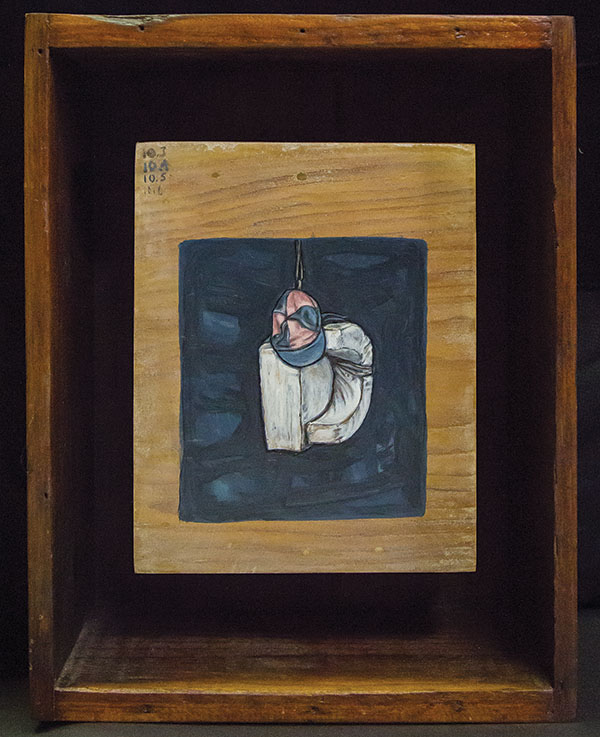Life Streams: Alberto Rey, Cuban-American Artist
Ogunquit Museum of American Art • Ogunquit, ME • ogunquitmuseum.org • July 30–October 31, 2021
Organized by the Burchfield Penney Art Center, this exhibition offers a mini-retrospective of the painter, videographer, and fisherman Alberto Rey. From the abstract-conceptual Through Windows, 1988, which Rey made in graduate school at the University of Buffalo, to the realist Lost Beauty: Icebergs XVI, from the 2020 series that features renderings of remnants of the Breiđamerkurjökull glacier in Iceland, Life Streams traces Rey’s artistic evolution.
Rey works in series and the show includes a sampling from several. Many address his cultural identity: Born in Cuba, he moved to Mexico at age three and then to Miami and finally to Barnesboro, PA. His Cuban roots tug hardest and are referenced in such pieces as House of Memories and La Basilica from 1991.
Other work conjures Rey’s early life in Miami, in what is now Little Havana. Icon Series: Bag of Chicharrones (Pork Rinds), 1995, depicts the treat his mother would buy him, in all its creased and greasy glory. The artist chose a traditional “high art” format—plaster on a fresco-like support system—to present this humble subject.

The Las Balsa (The Rafts) series, 1995–1999, drew on Rey’s visits to the Cuban Refugee Center on Stock Island where he found remnants of the perilous voyages people made fleeing Cuba. Las Balsa (The Rafts) Artifacts: Child’s Hat and Seat, 1996, is especially resonant.
Rey’s ongoing Biological Regionalism and Aesthetics of Death series begun in the 2000s reflect on the fate of fish through images of salmon, steelhead, and other species in parts of the U.S., Iceland, Wales, and Cuba. As a professional fly-fisherman, Rey feels a special passion for these creatures and the environmental challenges they face.
The exhibition includes three documentary videos: An Unkept Promise (2005), which reflects on the joy and anxiety of Rey’s first trip to Cuba in 35 years; Biological Regionalism: Atlantic Cod, Salem, MA (2007), which documents the history of the New England cod fishery made during his residency at the Peabody Essex Museum; and Bagmati (2016), a look at life along Nepal’s most sacred and most polluted river. All of Rey’s work manages to engage the eye while raising awareness. These are brilliant and commendable acts of art.
—Carl Little
